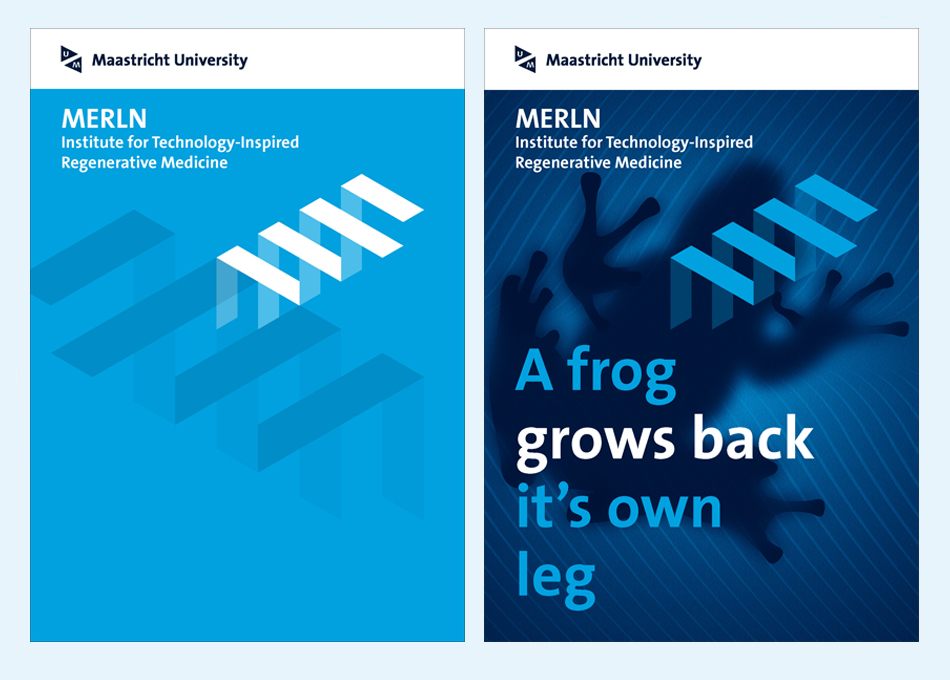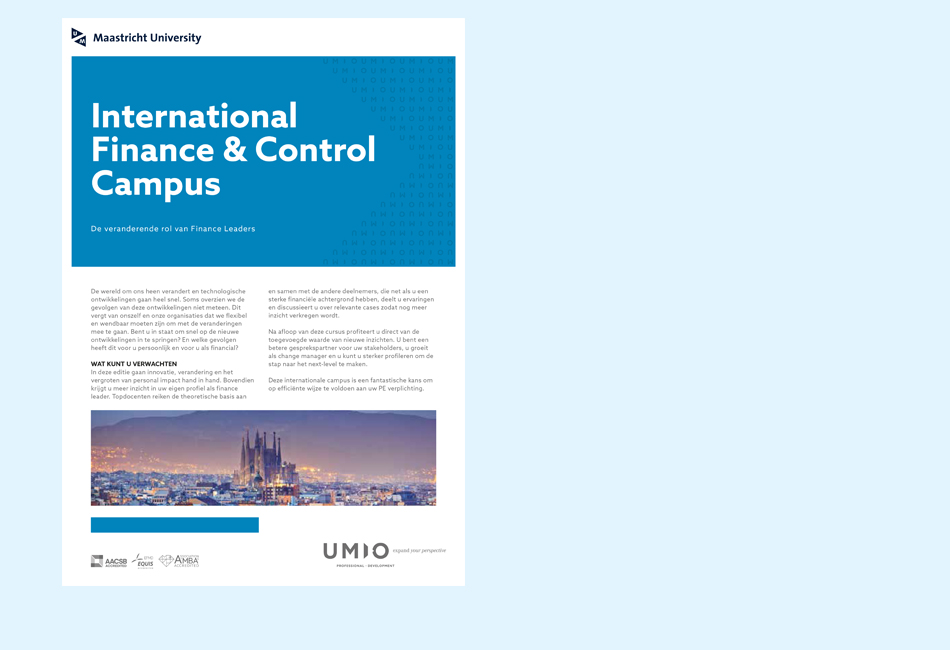Quadrant model & branding
In accordance with house style, all UM units must present themselves using an identity set out in the quadrant model. Where applicable, these identities consist of a maximum of four brand layers (UM, unit, department and position) which are visualised on stationery such as letterheads, compliments cards and business cards.
Quadrant 1: UM identity
Quadrant 1 applies to most of the university, including all faculties, various service centres and the Maastricht University Office.

On media such as letterheads and business cards, the logo (brand layer 1) is used together with the unit’s name (brand layer 2) in a fixed construction. Both brand layers are in Thesis Sans Bold and mutually linked by a hook. The letterhead and business card examples below show that various proportions are possible depending on format. The differences are mainly in height, because the word brand – depending on the name length and format width – covers one or more lines. The business card has the most compact version on the smallest format.
In other media, such as brochures, advertisements, posters, etc., the unit name can be placed in the free spaces in the grids/templates. See the examples below, where the unit name is included in the title bar.
Compact version
The smallest and most compact version of the UM logo is that used on the UM business cards. When the logo is combined with the name of the organisational unit, they must be connected with a hook as shown in the example below. The hook's length can vary depending on the name length. The only other use for this compact version is by external parties (e.g. as a sponsor logo on posters).
The compact logo may not be reversed (white on a dark background); it must always be placed on a white background. A fixed white space has been reserved around the brand for this (see the example below).

Quadrant 2: Endorsed identity
Quadrant 2 applies to A-brand university units allocated as such by the Executive Board (EB) and deans.

Inter-faculty A-brands
The existing quadrant-model doesn't provide direction for the recent developments around Kennis-As/Brightlands, the campuses, Triple-Helix (a partnership between universities, business and government to further develop the region) and the emergence of new inter-faculty institutes. Therefore a new variant has been developed.

Compact version
The smallest and most compact version of an endorsed A-brand is that used on the UM business cards. When the UM logo is combined with the name of an A-brand, they must be connected with a hook as shown in the example below. The hook's length can vary depending on the name length. The only other use for this compact version is by external parties (e.g. as a sponsor logo on posters).

UM logo / endorsed brand construction
In a layout, the endorsed brand is always placed at the bottom left of the UM logo at a fixed distance from it. Depending on its length, the endorsed brand’s name covers one or two lines. The "M" of the logo aligns with the first letter of the name of the A-brand.

A-formats (portrait or landscape) and other formats
Quadrant 3: Dual Identity
Some UM units collaborate with other organisations. The house style seeks to offer a tool for shaping this collaboration. How this dual identity can be visualised in house style will be fine tuned together with the relevant organisations on a case-by-case basis.

Quadrant 4: Independent brand
UM Holding (co-)owns a limited number of market-oriented companies which can present themselves as independent brands. With these companies, UM may present itself by way of a compact text placed on communications. For example, Etil is a 100% daughter company of UM Holding.
